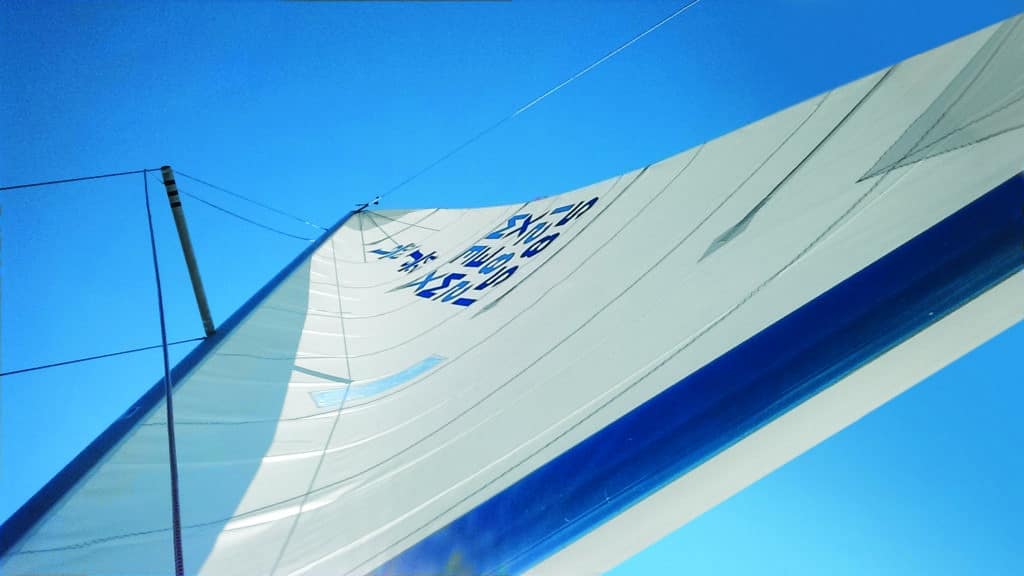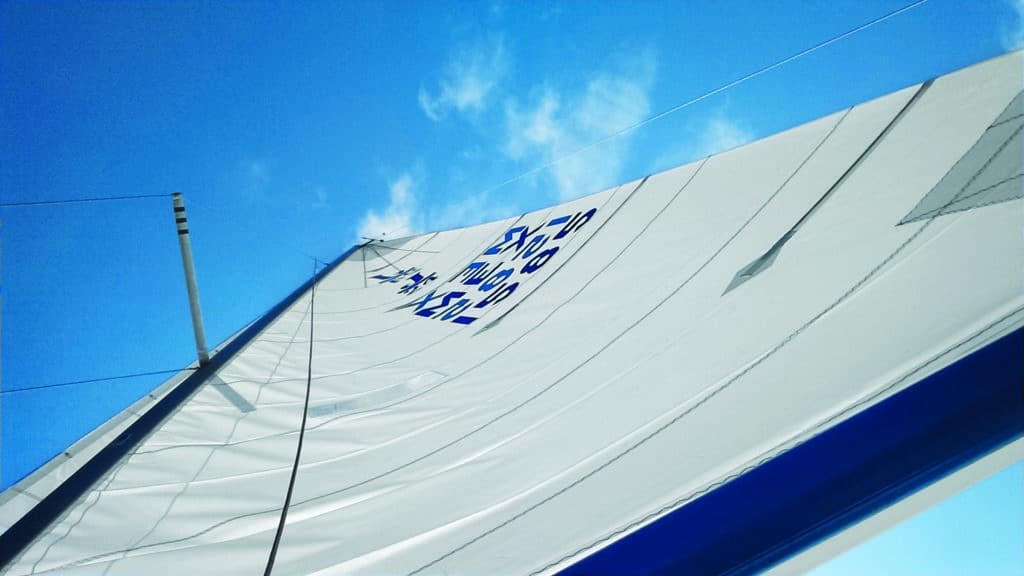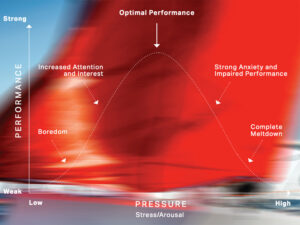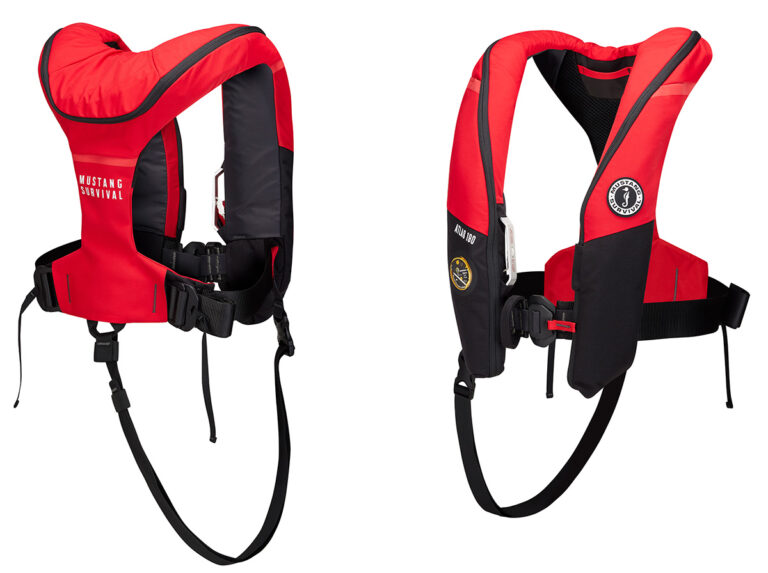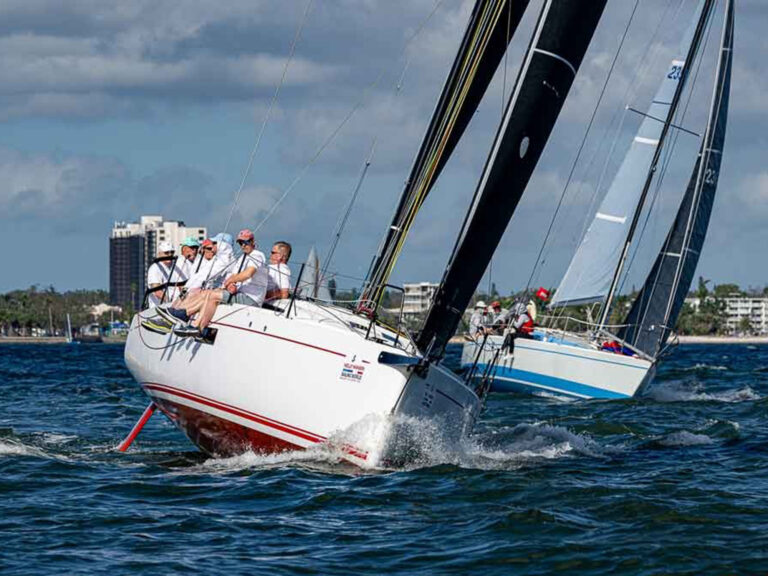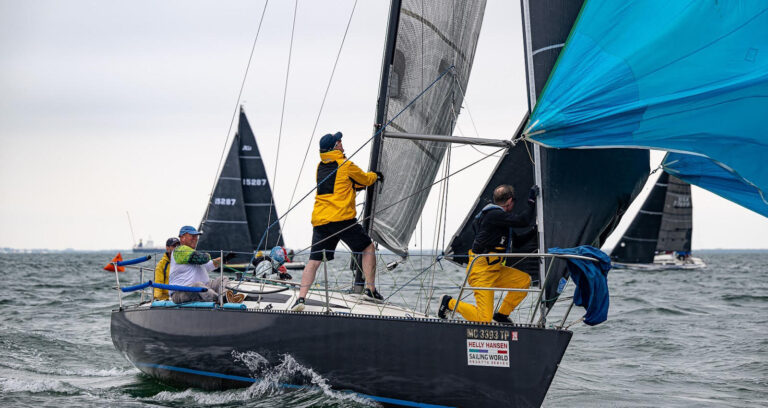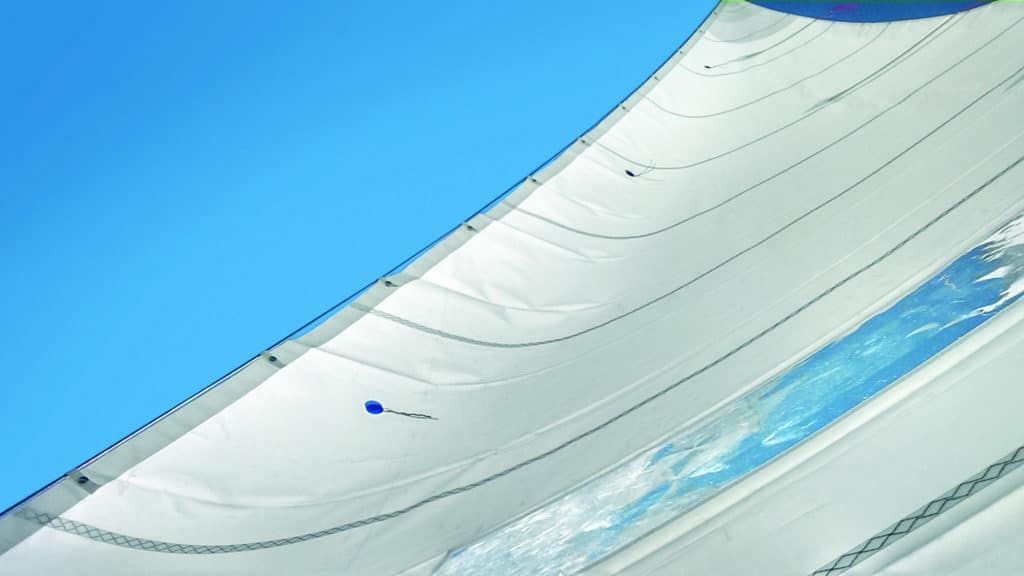
While coaching, I’m often asked the best order of depowering. It is a good question because there are several options such as sheets, steering and controls, which all contribute to keeping the boat flat in a breeze. All of these tools should be used, but for just about any boat and condition, my suggestion is to start with the backstay. It’s a control that considerably reshapes both the headsail and mainsail at the same time. Since use of the backstay has almost no downside, it’s an excellent tool to depower the sails. Let’s explore why.
The discussion needs to start with how mast bend and forestay sag control the power of the main and jib, respectively. As a quick review, there’s inherent shape built into sails using what’s called “broad seam,” whereby the panels that make up the sections of the sail are designed and cut with curves on the connecting edges, or seams. There’s not much we can do to change it on the fly. The rest of the shape is built into the main and jib with luff curve and luff hollow, respectively. For the mainsail, luff curve is extra cloth added into the luff, in an arch from tack to head. When the mast is straightened, it pushes that material into the sail, adding depth. When the mast is bent, it pulls the extra cloth, and thus shape, out of the sail. The same is true with the jib, except cloth is cut out of the luff in an arch from tack to head to create luff hollow. When the forestay is sagged beyond that luff hollow, cloth — and shape — is pushed into the sail. When it’s tightened, cloth is pulled out of the jib luff, thereby flattening the sail.
The backstay takes advantage of luff hollow and luff curve simultaneously to depower the sails, much like an airplane lowers its wing flaps for high lift and retracts them when high lift is not required. With the backstay eased, the mast is relatively straight and the forestay is sagged for maximum power in both sails, like airplane flaps down. As the backstay is tensioned, the mast bends and the forestay tightens, depowering both sails — flaps up.
Because it’s not the only tool to depower the sails, it’s worth talking about the other significant controls and how they work in conjunction with the backstay. Steering is an important one. You can steer up a little into the wind, both because the apparent wind shifts aft in the puff, and because you get rid of power by pinching.
Easing the mainsheet certainly opens the leech, spilling power from the main. But easing the mainsheet also straightens the mast and sags the forestay, which is opposite of what the backstay does so well. It’s slight, but it does put power into both sails when you want the opposite. Depowering with the backstay is much more efficient. As an added advantage, when the backstay is tensioned, the mainsail leech opens up because the mast is bent, shortening the distance from head to clew.
Since the leech opens and closes with adjustments to the backstay, it’s well worth a glance up at the top of the main, and re-trim if necessary. I often find that the leech opens so much, I need to tension the mainsheet in order to get some leech tension back. Another important consideration here is when you ease the backstay in a lull, the leech will tighten so much that the main will need to be eased. Trimming in a puff and easing when needing power seems counterintuitive, but it’s worth keeping a constant eye on the leech to make sure you have the desired tension, especially with masts that have bendy upper sections.
At times, a puff might be too big or hitting too quickly and frequently to keep up with backstay. In these conditions I switch to playing the mainsheet because I can react more quickly. I will still use the backstay for trends and when things are less chaotic. In these unstable and quickly changing conditions, it’s most important to keep the boat at a constant heel angle, so it’s better to be able to keep it under control any way you can than to be searching for the ideal sail shape.
To augment the backstay, the flatter the sea state, the more mainsheet tension you can have while playing the traveler more aggressively. This technique helps keep the forestay tensioned and the mast bent, which is essentially assisting the backstay. I find this technique particularly effective with boats that have flexible masts. The choppier the water and the stiffer the mast, the less effective this is. With a stiff mast and choppy water, keeping the mainsheet eased opens the leech and twists the main open. This helps with aggressive steering and helps keep the bow down and the boat moving through the waves. Once in the correct range of backstay and mainsheet, the traveler is still the first move with the sheet and/or traveler fine-tuning depending on the boat and condition.
To use the backstay effectively, rig tune has to be set right. I try to set the rig so that in the lulls with my backstay off, the sails are fully powered. Thus, when the puffs hit, I can tension the backstay, keep the boat under control, and keep it at a constant heel. For most boats, it’s maybe a 4-knot wind range that the backstay will cover. If the puffs are beyond what the backstay can handle, I still set the rig for the lulls. If the puffs are too big for the backstay to handle, or if the wind builds beyond its range, as a last resort, I’ll switch to easing sheets and playing the traveler.
How do you know if you’ve overdone it with your backstay tension? Easy: If your overbend wrinkles become too extensive, you have too much. Overbend wrinkles are creases in the mainsail that start from the mast, usually just below the spreaders, and head toward the clew. If they extend all the way to the clew, for sure, the backstay is too tight. When wrinkles extend halfway to the clew, you’re at about maximum bend. If you’re at this point and still need to de-power, it’s time to ease the sheet and drop the traveler. If the backstay is tensioned most of the time and rarely eased all the way in the lulls, then your next move is to go tighter on the rig.
You’ll know you have it right when you can set up your rig and sails such that, in the lulls, the backstay is eased and you can comfortably depower using mostly backstay. You’ll still have to change point and play the sheets or traveler, but they should be mostly fine-tune adjustments. The bulk of the power control is with backstay. Your helm and heel should remain constant as you tension it in the puffs and ease it in the lulls.
Consider the comparisons between the images of a mainsail and jib with and without backstay tension below:
Jib

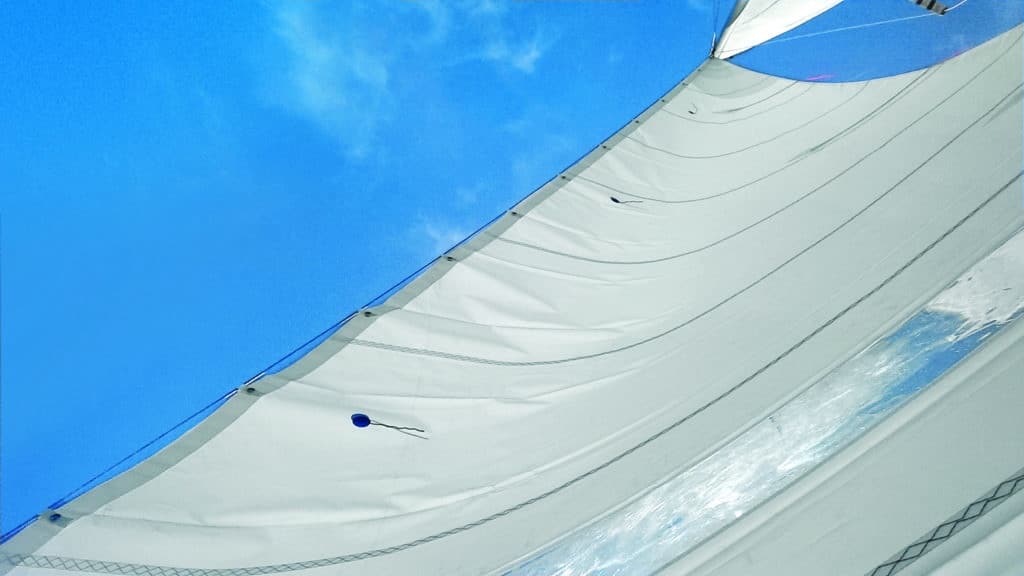
Main
